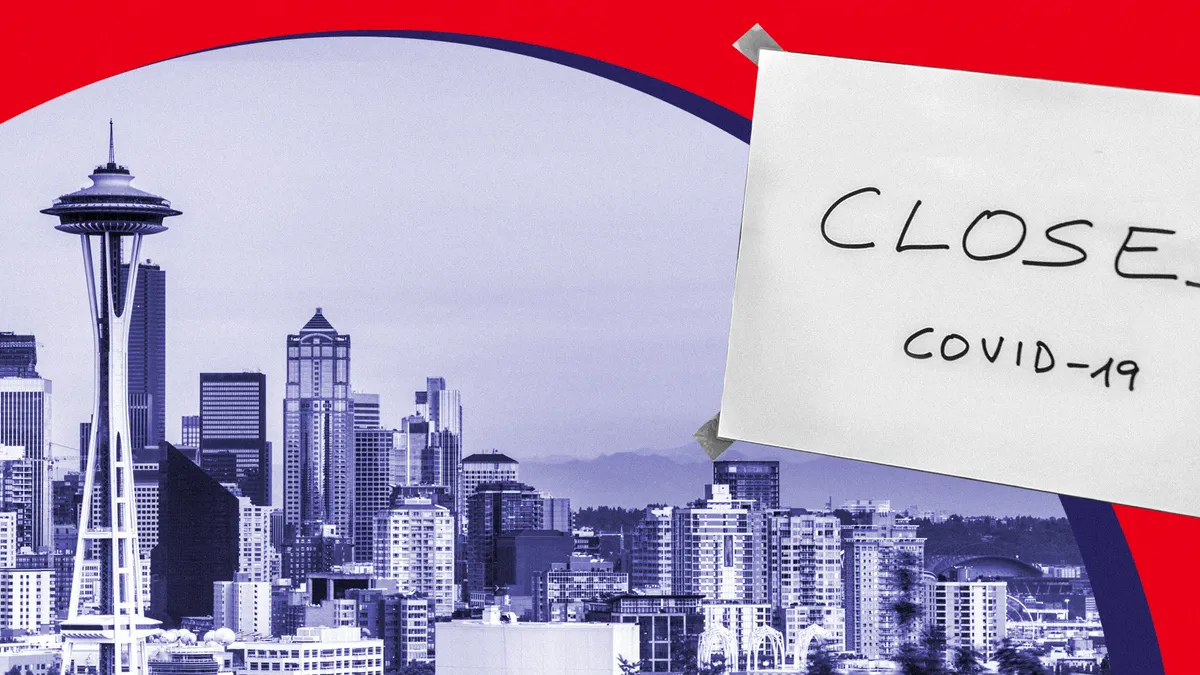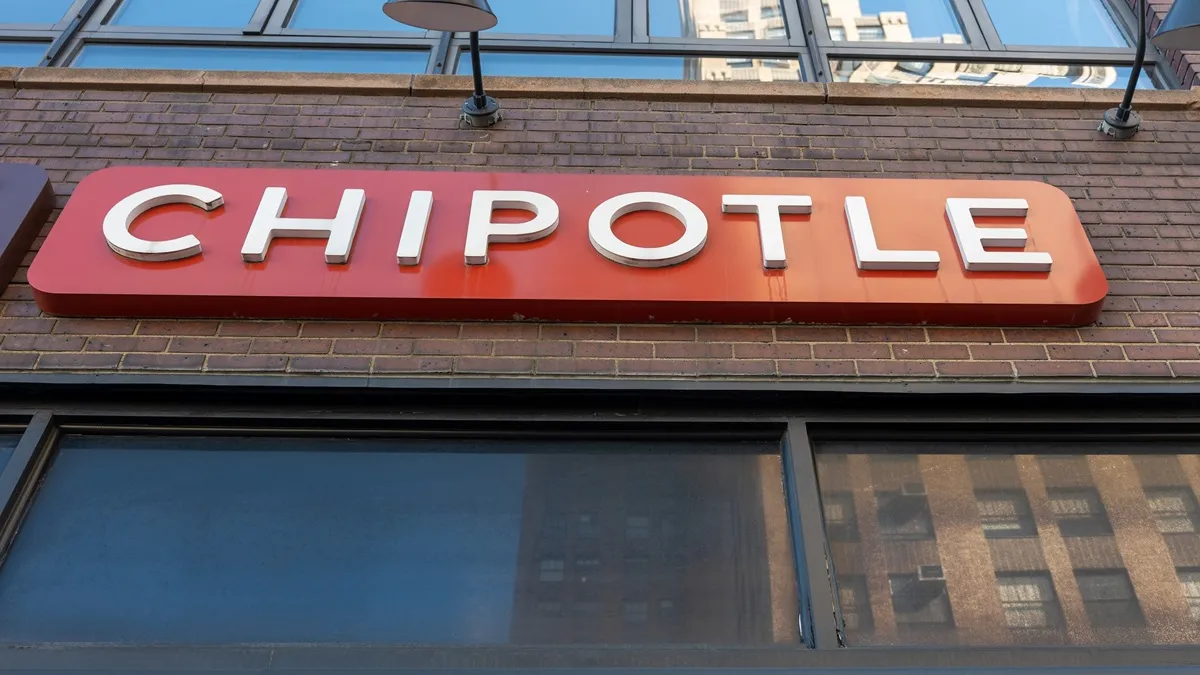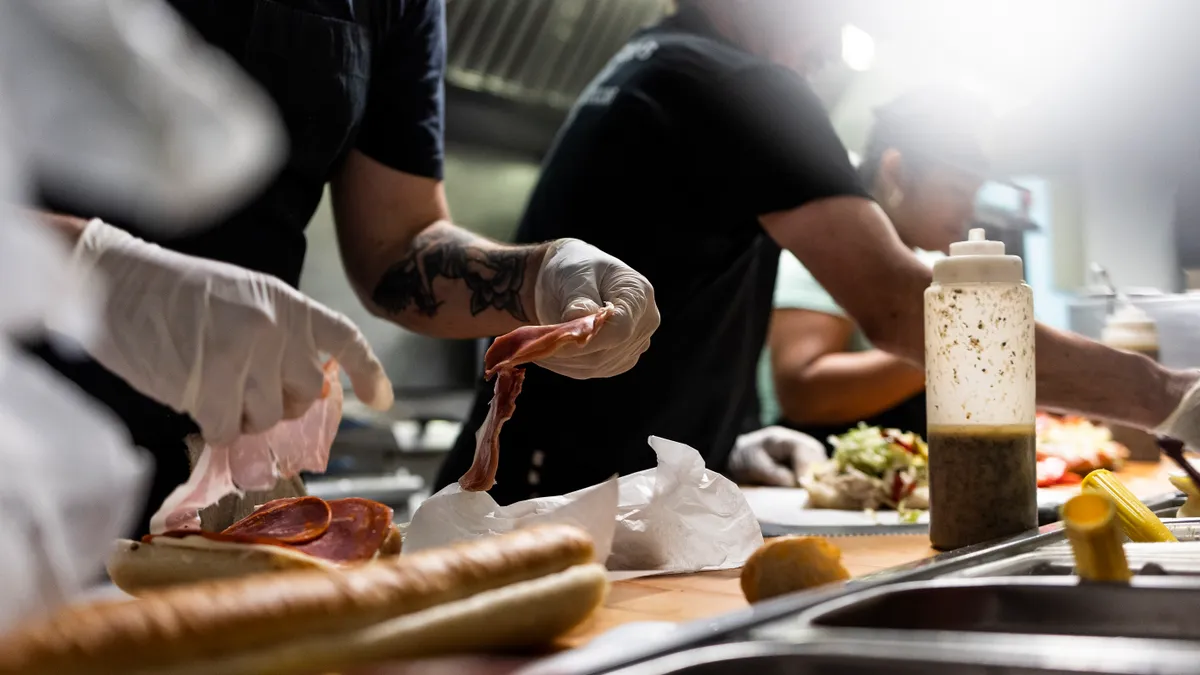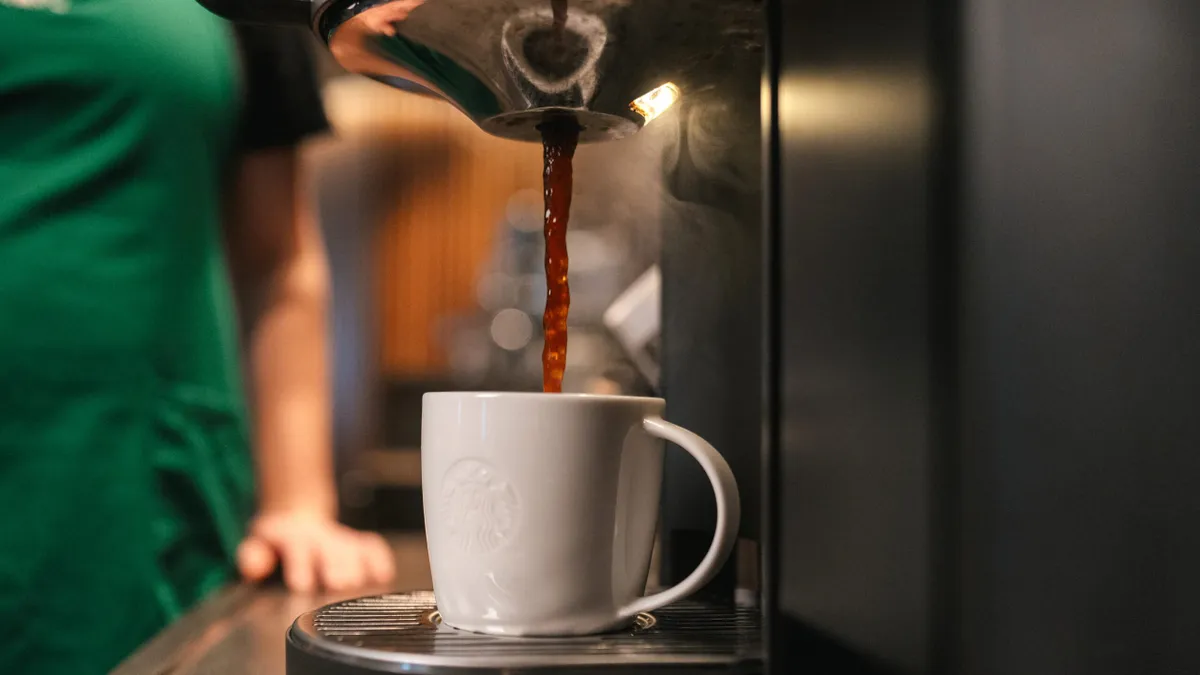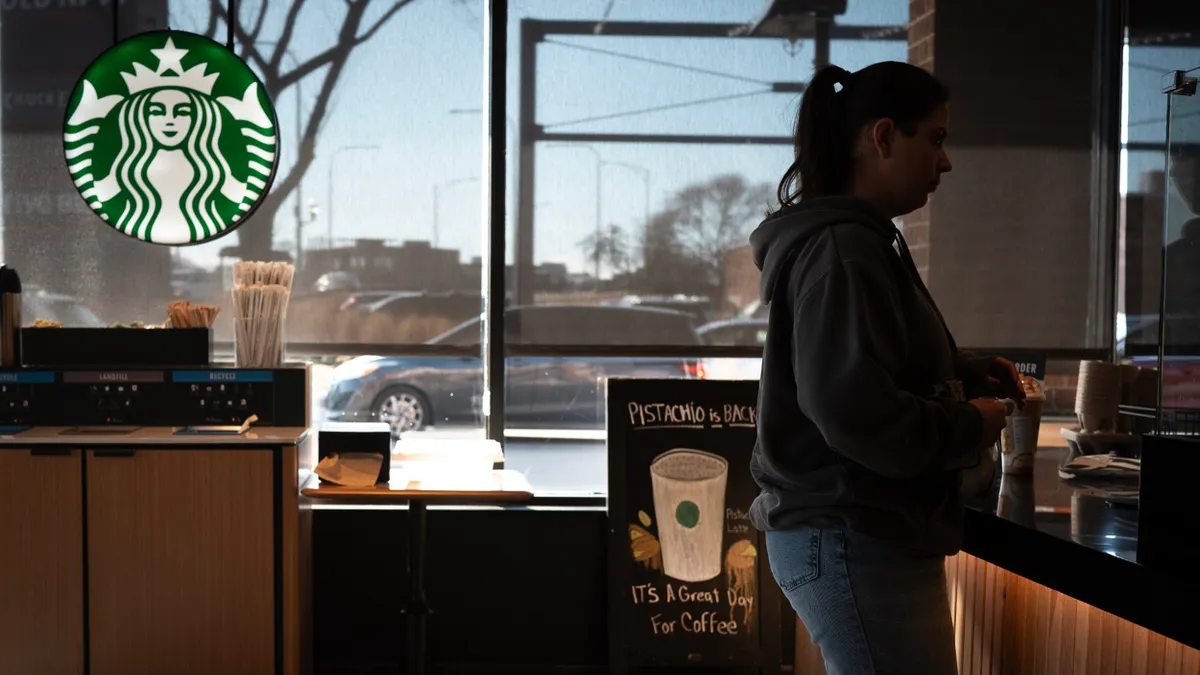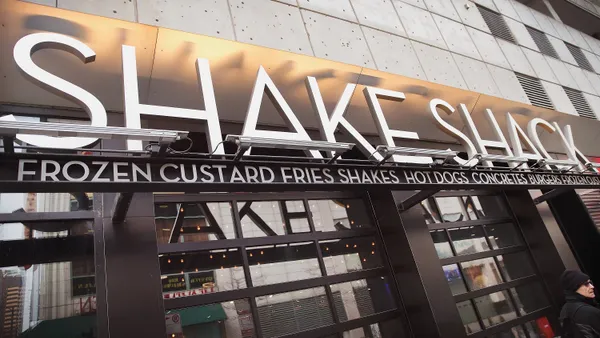This article is the first in a six-part series exploring how major restaurant cities were impacted by the pandemic. Future articles will be posted here.
Snapshot
- Restaurant closures to date: 624 as of September 2020, representing a loss of nearly 20% of Seattle restaurants
- Restaurant job losses to date: 49,000 — a 19% drop — for entire state in 2020
- Restaurant revenue losses to date: $4.8 billion (calculated by change in taxable business income in 2020 for entire state)
"Downtown [Seattle] restaurants just got decimated before even the rest of the country knew we had a problem."

Steve Hooper
President, Ethan Stowell Restaurant Group
Weeks before much of the nation had even uttered the word "coronavirus," Seattle restaurateurs braced for what was coming. On Jan. 21 — two months before city lockdowns took hold across much of the country — Snohomish County in Washington state recorded the first reported case of the novel coronavirus in the United States. The news made a small splash then, but by the end of February, Gov. Jay Inslee had declared a state of emergency. In the days that followed, Amazon and Microsoft sent their employees to work from home and, a week before indoor dining was completely restricted, Seattle Chef Tom Douglas shut his restaurants down.
The scramble was on. Restaurants rushed to alter operations to keep money flowing without compromising public health. Takeout and delivery orders surged. Yurts cropped up on city streets, alongside outdoor heaters, to encourage wary diners to eat on-premise.
A year later, the pandemic wears on as battered chefs and restaurant operators are still fighting to keep their lights on after dining restrictions fluctuated between total shutdown and 25% and 50% capacity limits. The Washington Hospitality Association previously projected 35% of restaurants open at the start of 2020 would be closed at some point in 2021, but the association increased that estimate to around 45% after the second round of closures last fall and winter.
One of the big questions, however, is whether those dining restrictions helped quell local COVID-19 rates, and were they worth the losses the restaurant industry suffered?
How changes to dining policy in King County affected COVID-19 rates
Gov. Inslee first halted in-person dining on March 16 last year as COVID-19 cases skyrocketed. Restaurant Dive calculated the percent increase of COVID-19 cases after each policy change — restrictions and easing of capacity limits — using data pulled from King County Department of Health (where Seattle is located). It showed that 30 days after the initial shut down, cases still rose 820%. Sixty days later, the monthly rate dropped to 53%. Of note, however, is in the early weeks of the pandemic, testing and reporting processes, as well as overall public health guidance, were still in flux as experts grappled to understand the new virus.
When indoor dining halted again on Nov. 16, rates increased 57% after 30 days, but the next month's rates only rose 38%.
These numbers are just a part of the story, as factors such as holiday travel or more indoor winter gatherings also impact rates. The inability to pinpoint the reasons for an uptick of cases makes it difficult to understand if dining restrictions have actually worked, creating divides in the restaurant industry about what are acceptable capacity limits.
The need for financial support
As restrictions deeply narrowed how restaurants could bring in revenue, both Seattle and Washington state released several initiatives to try to alleviate this financial burden.
Restaurant-targeted support issued by city or state
- In December, Seattle began offering $5 million in grants toward small businesses and workers in the hospitality industry. Of those funds, $2.5 million would be granted to restaurants and bars and $2.5 million would be provided to hospitality workers, according to the mayor's office.
- Seattle's Small Business Stabilization Fund offered $4 million in the form of $10,000 grants to help small businesses and nonprofits. Grant applications closed on Nov. 30 and the city reports that about 1,100 restaurants or bar owners applied.
- Washington State Department of Commerce offers the Working Washington Small Business Grant. As of the end of December, the state has allocated $100 million toward small business grants issued during three rounds. Priority is given to businesses with annual revenues of $5 million or less in 2019, have been impacted by public health measures, as well as businesses that had significant, cumulative impacts like full-service restaurants, fitness centers and music venues. During the third round, over 7,800 small businesses received a grant and more than half of the grants went toward full-service restaurants.
"I've got several friends that definitely wouldn't be open right now if all of the federal and local support hadn't been coming through."

Steve Hooper
President, Ethan Stowell Restaurant Group
Up close: Seattle struggles to remain the Northwest's culinary hub
Seattle-based Ethan Stowell Restaurant Group has more than a dozen restaurants. Its Goldfinch Tavern, with views of Puget Sound, serves handcrafted cocktails and local seafood like a cedar plank king salmon, with plates varying from $25 to $85. The company's Cortina Cafe, located on the second floor of a downtown Seattle skyscraper, offers quick breakfast and lunch options.
The company's concepts are very different, but when the pandemic hit and indoor dining shut down the week of March 16, many adapted operations in the same way, said president Steve Hooper. They closed down for a few days, regrouped and relaunched. When the restaurants opened their kitchen doors again, they were takeout and delivery eateries.
"Downtown restaurants just got decimated before even the rest of the country knew we had a problem," said Hooper, who is also a board member of the Seattle Restaurant Alliance.
A number of factors made Seattle one of the hardest hit areas of Washington during the pandemic, Anthony Anton, president and CEO at the Washington Hospitality Association, said.
Tourism has been down all year and the city has reported the lowest hotel occupancy rates on the West Coast. Seattle also lost its lunchtime and happy hour crowd as many of its 30-story office buildings remain empty. Anton noted Seattle isn’t located close to residential neighborhoods, which now have most of the work-from-home populations that rely on nearby restaurants for takeout options.
An uptick in violence — homicide rates increased nearly 50% last year — in downtown Seattle, also has scared away some potential diners, Anton said. He believes the current crisis is more devastating than other economic downturns during the Great Depression and after 9/11.
"This just keeps repeating itself over and over and over again," Anton said. "The amount of employment loss and the loss of people going out of business permanently has been nothing we've ever seen before."
Some restaurants have 'just given up'
Restaurant closures keep piling up. Seattle is predicted to see closure rates close to 45%, according to WHA, while rural counties and neighborhoods that were seen as "escapes" should fare a little better.
"The ones that are purely downtown are closing. I think that's probably been the most common option is they've just given up," Anton said.
ESR was able to keep most of its 15 locations open because they were in areas close to where people live, Hooper said. Its site selection was particularly helpful when it opened two new restaurants, which had already been in the works. In September, the company opened its sibling location to How to Cook a Wolf - Queen Anne in the Madison Park district, a popular residential area on the shores of Lake Washington.
"[The restaurants] were in neighborhoods that were excited for something new to show up … in the middle of the pandemic," Hooper said.
The company also pivoted to offering outdoor seating. Ballard Avenue, where ESR has a pizzeria, is busy on Friday nights with patrons enjoying their meals al fresco, Hooper said. The city extended the sidewalks for two blocks of the street, allowing for only one-way driving traffic.
"People are out there and they're walking around," Hooper said. "There's a sense of normalcy that has come with it. That doesn’t exist in the same version in downtown Seattle where there's literally nobody."
But managing outdoor dining even in a popular area like Ballard Avenue hasn't been easy for Seattle restaurants.
"Seattle is not Southern California. We are more weather dependent, but we're not Chicago either," Anton said. "We have a limited ability to do outdoor dining because of the weather, and we have some extreme variety that makes your ability to depend on it all over the map."
Restaurants now, for example, have to factor in wind direction because it can really tear up outdoor tents, Anton said. Restaurateurs have learned which way to face tents, how to adjust them and other factors that weren’t part of their thinking before, he said.
"How do you depend on a business when every two, three days you have to reschedule, reorganize and reorder?" Anton said.
Pivoting strategy to reclaim customers
Prior to the pandemic, 80% of ESR's concepts had no takeout or delivery. Today they all offer the services, Hooper said.
"What we found was a willingness of the customer to really engage with that takeout and delivery. And that has continued regardless of how much patio space we have or when we had indoor dining," Hooper said.
ESR also created several pop-ups where it asked its chefs to come up with new ways to engage with guests, like Pinchy Bois, which served lobster roll combos for pickup and delivery during the first two weeks of March this year.
"We may have found a couple of new concepts accidentally as a result of running all these pop-ups. Some of them turned out to be really popular," Hooper said. The company may explore some of these concepts in the next year or two, he said.
For Piroshky Piroshky bakery owner, Olga Sagan, the pandemic meant taking a gamble on e-commerce and delivery. She wanted to take her customers back from third-party platforms so she developed an online system that allowed her staff to deliver the products, Sagan said.
"The learning curve was very, very expensive," Sagan said. If a delivery driver went out, but there was a mistake to the order, she'd have to send a second driver out to fix the problem, meaning she was paying for an extra hour of labor in a city with a $15 minimum wage, Sagan said.
But the experiment paid off. The first month of this year was the busiest January she has experienced in over 20 years, Sagan said, adding that her company now has upwards of 200 deliveries per day. These additional sales are helping her stay afloat, even with her Pike Place Market location down 60% of sales in 2020 compared to the previous year while another bakery has seen sales drop 90%. Sagan, however, had to permanently close two bakeries.
Sagan said the e-commerce platform she built, which also includes its own customer database that makes direct marketing easier, will be available to other restaurants and businesses to create their own digital and delivery channels.
"You can take charge of the entire transaction. You can take charge of your entire marketing and you can take your power back," Sagan said. "It works."
Aid keeps the lights on, but operators still just hanging on
Local and federal aid has helped some operators remain open. ESR applied for anything that it was eligible for on every level, including PPP and state grants, Hooper said.
"I've got several friends that definitely wouldn't be open right now if all of the federal and local support hadn't been coming through," Hooper said.
Without financial help, ESR wouldn't have been able to make all the pivots it had to this year, like building outdoor patios, and keep the lights on and staff employed, Hooper said.
"It's not like we're making a bunch of money right now," he said. "We're just holding water and keeping our teams intact."
But PPP hasn't benefited everyone.
"PPP is great and very helpful, but it only works if you're employing people," Anton said.
Sagan applied for PPP loans, but didn't qualify for forgiveness at one of her locations where sales are down by 90% because it didn’t have enough expenses to be applicable.
Looking toward the future
But things are changing with increased vaccinations across the state and dining room capacity elevated to 25% in February. On March 22, Seattle restaurants will be allowed to increase capacity to 50%, which will be a critical stepping stone.
"We need to get to 50% [dining room capacity]," Anton said. "Every month that a restaurant is closed, they lose an average of $25,000 in hard costs … whether [they're] open or closed."
Vaccinations can only have a positive impact in bringing people back, especially when it comes to people who are still unsure about going out during the pandemic, Hooper said.
How Seattle's restaurant foot traffic shifted a year after the pandemic
While restaurant workers haven't been vaccinated en masse in the state, Anton said having the most vulnerable receive vaccines will help reduce hospitalization and ICU rates, which are typically driving metrics on capacity limits.
But how Seattle recovers is up in the air, especially since no one knows when its downtown will repopulate, how long it will take for people to come back to the office and in what numbers they will have when they do return, Hooper said.
Seattle's economic environment also will make it difficult for those restaurants waiting to fully reopen.
"Seattle is going to be challenged to hold onto being the culinary hub of the Northwest," Anton said. Nearby cities like Bellevue and Tacoma, Washington have more stable business climates, are more affordable and have close neighborhoods that are going to make strong runs for struggling chefs to come to those areas instead, he said.
Restaurants might see an uptick in sales with less competition as fewer restaurants return, but many will be spending the initial recovery paying off debts incurred to stay alive, he said.
"Pre-pandemic, Seattle was a little overfed. Too many restaurants were just barely scraping by with not enough margin to really make a go of it and really put anything in the bank, which is why there were no reserves," Hooper said. "The industry wasn’t healthy going into the crisis, and the hope is that this reset and delivery [and other initiatives] actually give us a better chance to build a more resilient industry coming out of it."




